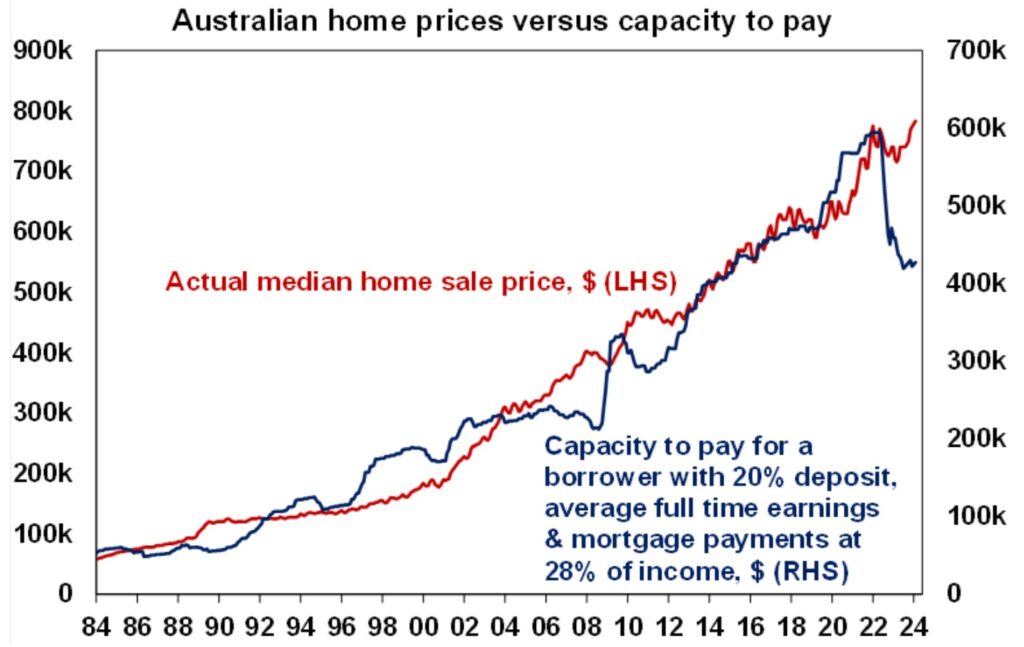Clients come to us for a variety of reasons, and surprisingly, being time poor is not the main reason. Many tell us that they have been searching for months on end, (and sometimes years), and to no avail. Unfeasible expectations can create havoc for a buyer.
For a significant proportion of our first meetings with clients, we often have to discuss compromise.
But what is a fair compromise? And what should they never compromise on?
Unfeasible expectations are relatively easy to spot. I generally ask which properties have previously caught their eye, or better yet, which properties they have previously bid on or made offers on. We then contrast the sale price with their budget, and if the pattern demonstrates that they have continuously been targeting properties outside of their budget, it’s easy to conclude that they need to alter their criteria.
When I identify unfeasible expectations, I discuss this quadrant below with our buyers.

I’ve used this illustration for over a decade now, and it illustrates the four essential pieces of the puzzle when it comes to property buying. I say to my clients when we find ourselves in a situation requiring compromise, “We only need to alter one part of the puzzle. Budget is often a non-negotiable, so it comes down to location, land size, or dwelling”. The latter can incorporate era, dwelling size, (including bedroom count), condition and style. Just one change can take a brief from unfeasible to feasible.
But as simple as it sounds, it’s not always easy.
I also find it useful to work out our clients’ hierarchy of preferences, for example, some will challenge me on dwelling style and size by making it clear that this is not something they are prepared to compromise on. Particularly for families, a certain bedroom count will be critical. This same family may be comfortable considering neighbouring suburbs, better known as ‘bridesmaid’ suburbs. However, for some who are particularly tied to an area, whether it be for schooling, family or otherwise, their hierarchy will be different, and they may be comfortable to consider a smaller house or an alternative style dwelling, such as a townhouse. Land comes into play also, in fact it is often land size that creates the biggest challenge, particularly for older style, established homes where land to asset ratio is so much higher.
Issues can arise, however when buyers make the wrong compromises. I’ve listed some common ones below.
Buying in a compromised location: This includes a busy main road, a site abutting a rail line, and a property neighbouring something that could be described as unsafe, noisy or highly unappealing. It also encapsulates areas where traffic congestion creates issues for street parking. The problem with buying a property in a compromised location comes back to selling. Unless these attributes are changing (i.e. rezoning of a neighbouring site), it’s impossible to change the issue. Future tenants and buyers will feel the same and the buyer pool will be shallow when it comes time to sell.
Buying a property that won’t be suitable for at least five years: I am reluctant to help anyone purchase a short-term home, unless their strategy involves adjusting the home to an investment property in the short term. The purchase and selling costs will likely erode any profits and could in fact see the buyer sustain a loss. Stamp duty, selling fees, and marketing all take a toll, particularly when the ownership tenure is so short.
Buying a property that requires significant work, when finances are not available for construction or improvements: Many buyers underestimate the cost of works, but to compound the issue, many buyers misunderstand how finance works when it comes to seeking additional lending for renovations. For any buyers who are purchasing the maximum they qualify for, (i.e. buying at the top of their borrowing capacity), they won’t be able to borrow additional funds in the short-term. And for those who do have residual borrowing capacity, any significant works will require construction lending unless they have accumulated equity in the property over a longer term, (or have equity in other properties). If the property isn’t to the buyers ‘liveable’ standards, simply assuming lending will ensue is naive.
Waiting it out for the market to drop: This can be a dangerous strategy, particularly if the market moves quickly in a positive direction. Past negative events (such as higher interest rates, COVID and the GFC) are good reminders that negative media sentiment doesn’t correlate with Australian house prices. I’ve met many people who have regret about being timed out of markets that they could have afforded.

Spending beyond your means: Buyers who push themselves beyond their means often find that they either resent their decision (and the property) because their lifestyle is too negatively impacted, or they choose to sell because finances bite. Like the second point about tenure, a sale sooner than intended erodes any gains and can leave people in a worse position than when they first purchased.
Sensible compromises make the difference between buyer-fatigue and an exciting, and suitable purchase.
REGISTER TO OUR NEWSLETTER
INFORMATION
CONTACT US
1A/58 ANDERSON STREET,
YARRAVILLE VIC 3013
0422 638 362
03 7000 6026
CATE@CATEBAKOS.COM.AU
